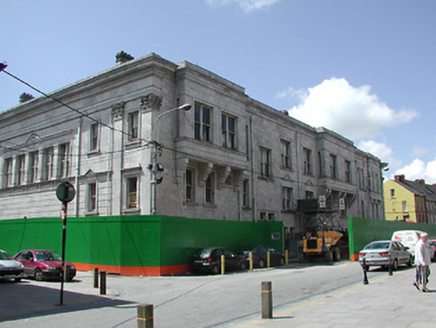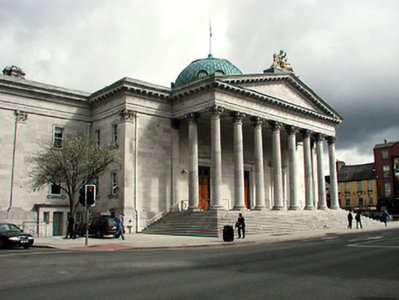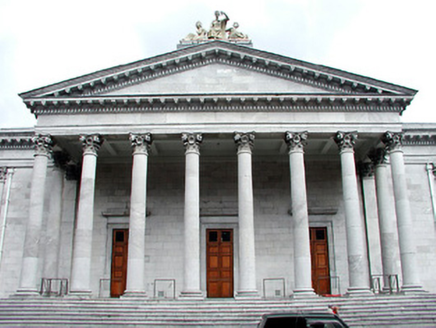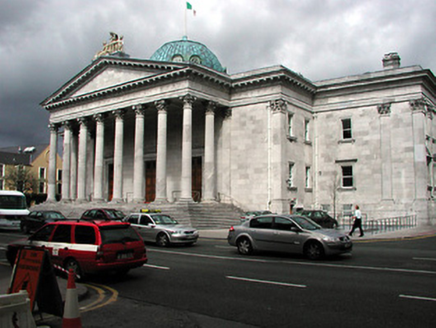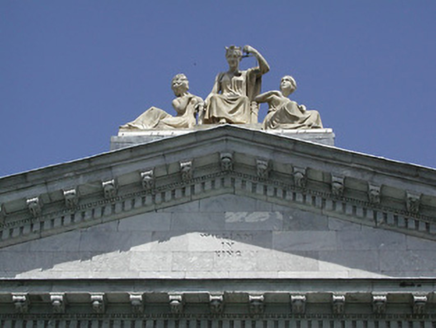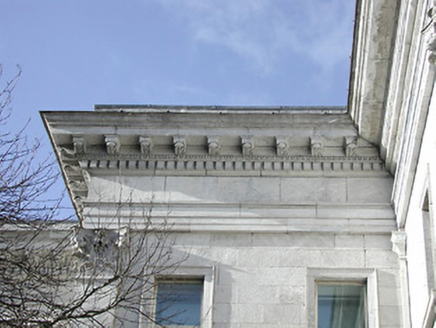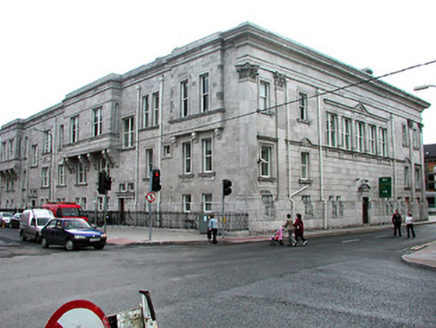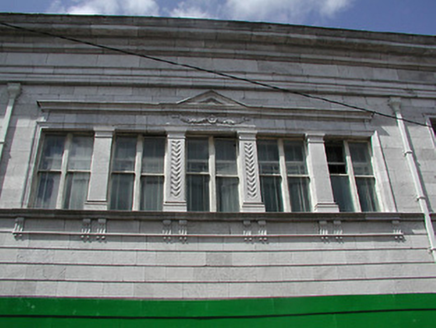Survey Data
Reg No
20503177
Rating
National
Categories of Special Interest
Architectural, Artistic, Historical, Social
Original Use
Court house
In Use As
Court house
Date
1825 - 1830
Coordinates
167087, 71798
Date Recorded
31/03/1994
Date Updated
--/--/--
Description
Neo-classical court house with Corinthian detail, built 1828 by Richard and George Pain. Partially destroyed by fire and rebuilt 1891 by William Hill architect and Samuel Hill building contractor. Limestone ashlar facade dominated by giant octostyle Corinthian portico with dentil and modillion detail; flanked by recessed outer bays articulated by pilasters. Plain frieze and tympanum. Pediment with three figures at its crown. Dome to roof. East and west elevations articulated by giant order Corinthian pilasters and plain frieze. Rusticated basement, horizontal chamfered courses to ground floor, ashlar masonry above. Square headed window openings. Windows to the basement having full sized bellied window guards, single windows elsewhere having moulded architraves and bracketed cills, small pediments to some windows. Central grouping of five openings having extended moulded cill on consoles and moulded cornice; central bay having decorative pilasters, swag motif to frieze in low relief and pediment; other openings are divided by plain pilasters, and have a plain frieze. Snecked limestone with cornice to north elevation. Square headed window openings with a mix of plain and moulded architraves, extended moulded cills, individual cills, some with apron panels, and pediments to individual windows. Two oriels to north elevation, both having a pair of windows. Windows throughout are timber sliding sash single pane. Island site with street frontage to all elevations.
Appraisal
Magnificent example of Neo-Classical public architecture in Ireland, and one of the most important buildings in Cork city. Reputed to have the only octostyle Corinthian portico in Ireland. Retaining much fabric from its rebuilding in 1891, which was in turn based on the remains of the 1835 building. Significant also for its role in the social history of Cork.
